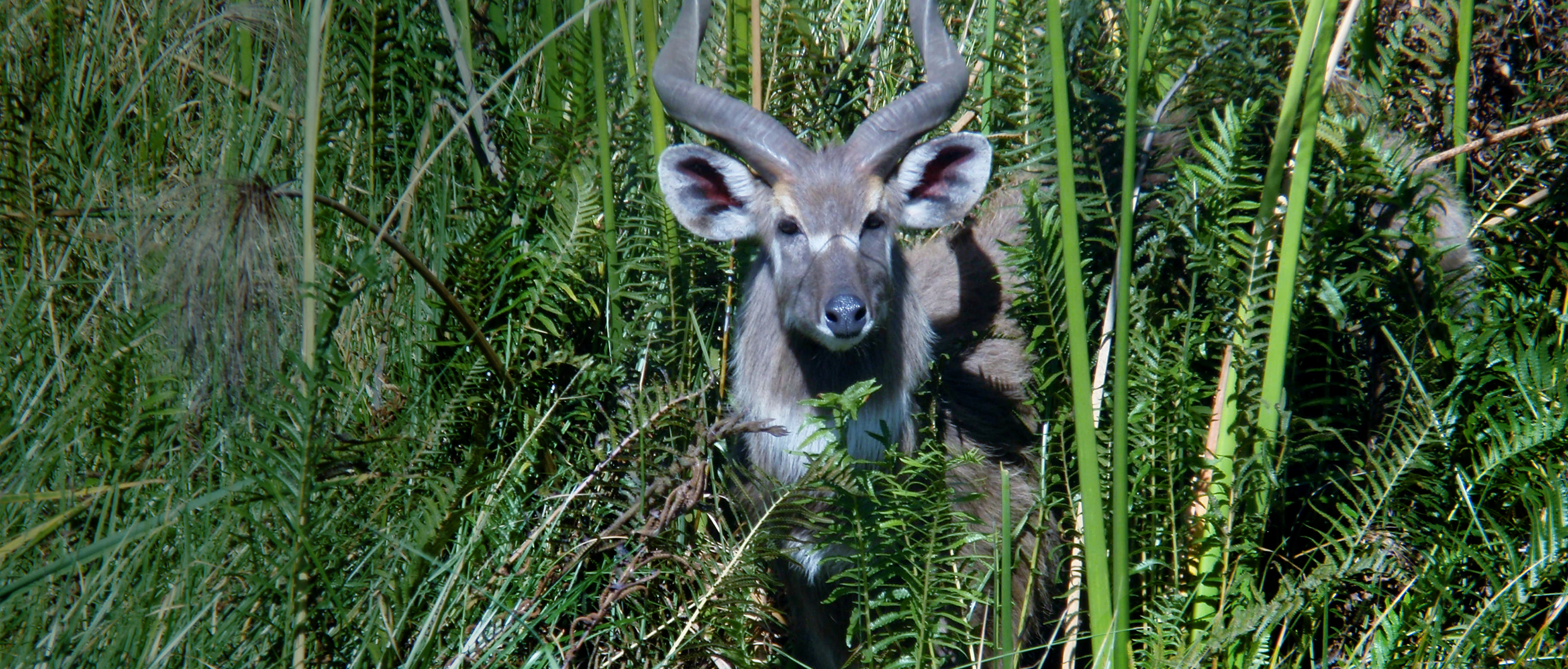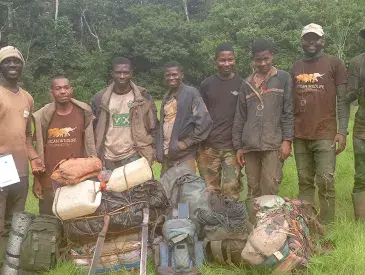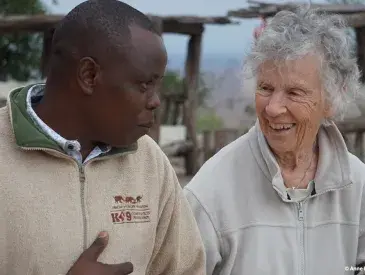What is a sitatunga?
The sitatunga is a rare swamp-dwelling antelope. It is distinguished by its long, splayed hooves. These hooves make them clumsy and vulnerable on firm terrain but well-adapted for walking through muddy, vegetated swamplands. Their shaggy, oily coat is another adaptation to an aquatic habitat. The males' coats are grayish-brown, while the females' are a reddish-chocolate brown, with six to eight vertical white stripes on the body. Males are also considerably larger than females and have long, twisting horns.
Tragelaphus spekii
50 to 125 kilograms (110 to 275 pounds)
75 to 100 centimeters tall (30 to 40 inches)
Up to 22 years in captivity
Aquatic, wetlands
Herbivorous
7.5 months
Humans, pythons, crocodiles, leopards, lions
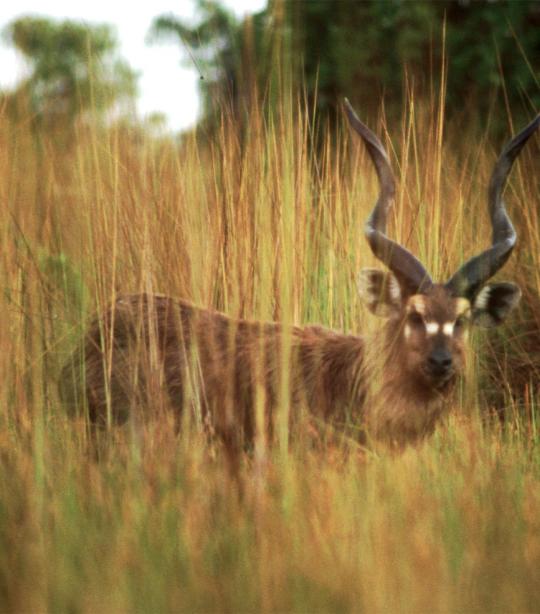
Challenges
Hunting is causing a decline in sitatunga populations.
These antelopes are easily caught by setting snares in their well-traveled paths in swamps. Because of this, overhunting outside protected areas is causing a rapid decline in their numbers.
Their habitats are being destroyed.
People are draining the swamps sitatungas love to live in.
Solutions
Our solutions to protecting the sitatunga:
African Wildlife Foundation knows that communities and wildlife can thrive if tourism is developed. We connect communities and private investors to construct conservation tourism lodges like Satao Elerai, a luxury lodge situated on 5,000 acres in Kenya. The land is protected, so wildlife can roam safely and freely, and the revenue is reinvested into the community and into local wildlife conservation.
AWF works with rural communities living in close proximity to wildlife to build schools. In exchange for practicing conservation, communities receive schools with technology labs and conservation curriculums. In Tanzania, AWF rebuilt Manyara Ranch Primary School. By working with communities to provide tangible incentives for conservation and education on the need for conservation, we are able to foster a culture of conservation.
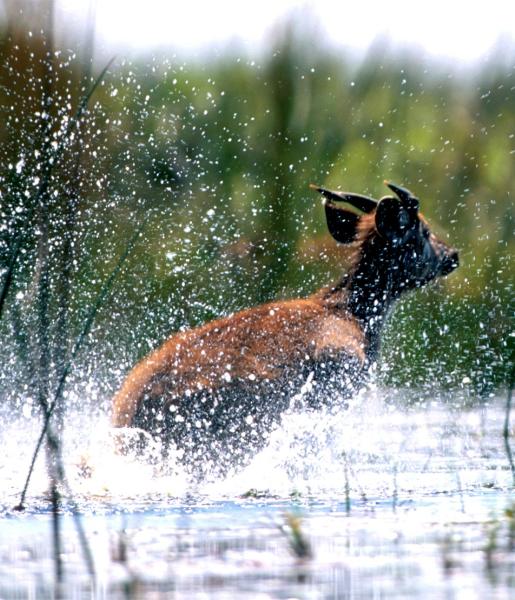
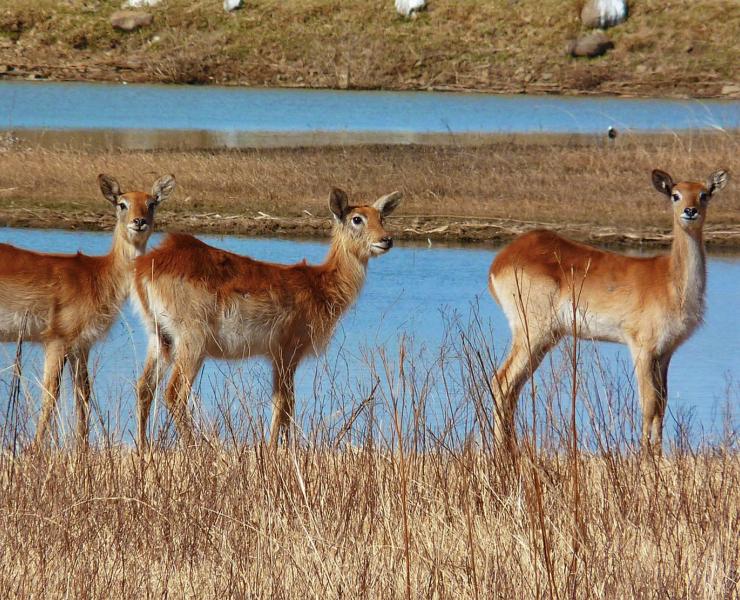
Behaviors
The sitatunga is a swamp creature.
Sitatungas use regular, tunneled pathways through tall reeds and papyrus. As a swamp provides a year-round supply of rich food, they have exceptionally small home ranges.
Slow and steady wins the race.
They are strong but slow swimmers capable of paddling several miles. Usually half-submerged, they can dive deeper if in danger, staying hidden with only part of the head out of the water. They will rest on dry mounds or floating islands in the swamp, turning circles on the spot until the grass is trampled into a springy mat. The young are also placed on these mats, which are raised out of the water.
Young sitatungas are more independent than most antelopes.
Although essentially solitary animals, pairs associate for short periods of time for mating, and small, temporary mixed groups are occasionally formed. The young are born on a dry, trampled mat in the swamp. The newborn lies out for as long as a month, with only short visits from their mother for suckling. Although nursed from four to six months of age, they are more independent of their mother than are most other antelopes. The ties between mother and young do not last for long, for half-grown sitatungas are often on their own and are often seen foraging alone.
Diet
Sitatungas eat what is convenient.
These antelopes eat bulrushes, sedges, and the leaves of bushes in the swamps as well as grass in adjacent riverine forests. They will also eat fallen fruit and chew the bark of some trees and bushes.
Habitats
Where do sitatungas live?
This swamp-dwelling antelope lives in thickly vegetated, muddy swamps, and marshes. Sitatungas are still found in small numbers in Saiwa Swamp National Park near Kitale, Rift Valley Province, Kenya as well as in larger populations around Lake Victoria, the Selous Game Reserve in Tanzania, and several river basins in Uganda.
